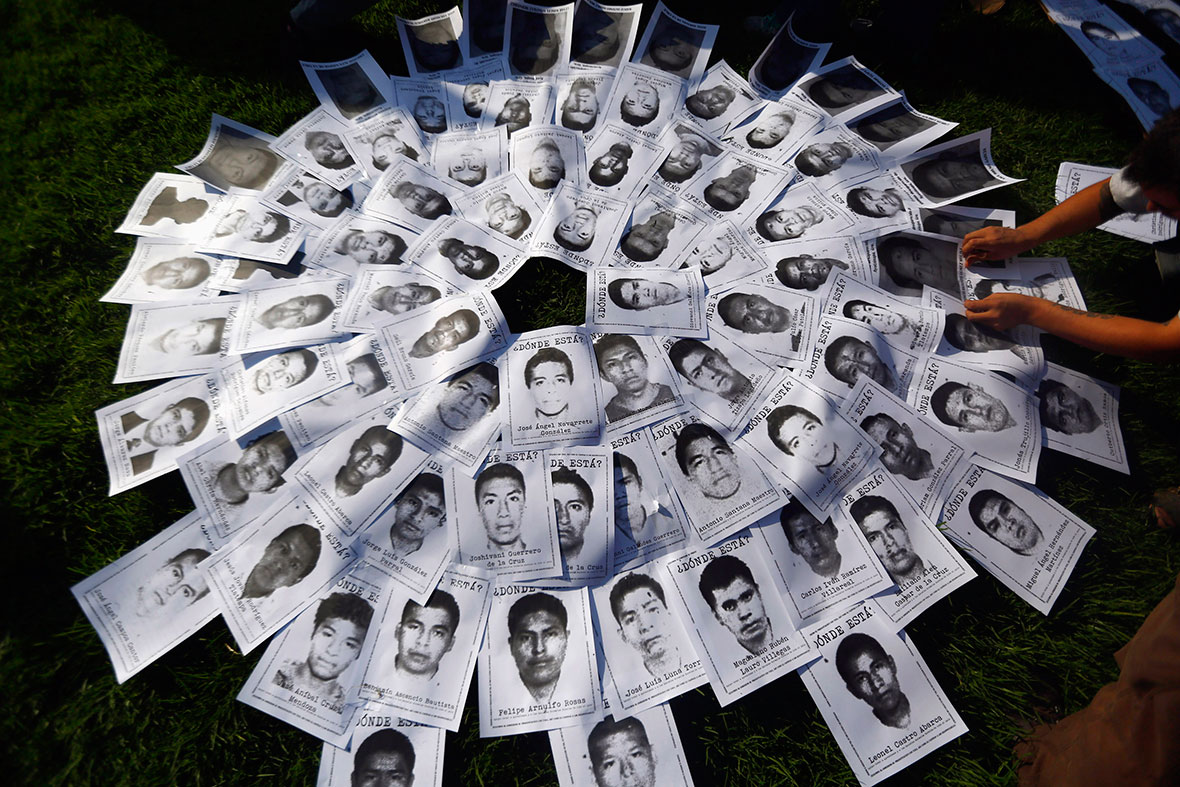
Forensic experts in Austria have identified the remains of a second Mexican student who was among a group of 43 who vanished after they were detained by police, as the first anniversary of their disappearance approaches.
Mexico’s attorney-general Arely Gómez said that DNA evidence from bone fragments analysed by the University of Innsbruck corresponded to Jhosivani Guerrero de la Cruz. It represented a “step forward” that would “strengthen the investigation” into the tragedy
They disappeared in the town of Iguala in Guerrero state.
He confirmed the identification of Jhosivani Guerrero de la Cruz, found in a rubbish dump outside the city.
Austrian forensic officials have been carrying out tests. The remains of another student Alexander Mora Venancio were identified last December.
The group disappeared in September last year when they were on their way to take part in a demonstration.
Relatives of the students have questioned the account of the Mexican authorities who said corrupt local police handed over the students after to local drug gangs who had then killed them and burnt the bodies.
This month the government was embarrassed when a team of independent experts appointed by the Inter-American Commission on Human Rights demolished the official “historic truth” that the students had been burnt to ashes on a funeral pyre on a rubbish dump in the western state of Guerrero, and their remains thrown in bags into a nearby river.
The report found there was no evidence to support such a thesis and that such a bonfire was scientifically impossible.
Ms Gómez, making the announcement on Mexico’s independence day, said Mr Guerrero de la Cruz had been identified from mitochondrial DNA analysis. Mexico last year sent 17 bone fragments to Austria, but experts there initially succeeded in identifying only one student, Alexander Mora Venancio. Guerrero de la Cruz was identified after a third DNA test, the attorney-general said.
The Mexican government said it would send forensic experts to the area.
The attorney-general’s office and an Argentine forensic team assisting in the investigation had initially selected the 17 best preserved bone fragments, among some 63,000 found on the dump or in bags thrown into the river, to send to Austria for testing. The other fragments would be reassessed to see whether others could be sent to Innsbruck, Ms Gómez said.
In their report, based on an assessment from a fire expert, the independent team concluded that there was no evidence in the rubbish dump that there could have been a pyre of the dimensions required to cremate 43 bodies. The official Mexican investigation had been based on confessions by the alleged perpetrators, but the independent experts said there was evidence the confessions were made after they had been tortured.
The fire expert, José Torero, immediately found his conclusions and credentials questioned by pro-government commentators. The attorney-general has already announced that a new team of fire experts will assess the rubbish dump in an attempt to establish what happened, and said Mexican authorities “will not rest” until the disappearance has been solved and the perpetrators brought to justice.
Mexico also faces questions, which the authorities have yet to address, raised by the independent experts’ report into the events of last year, when the students came under fire by police after commandeering five buses to take them to a rally in Mexico City.
The experts highlighted the possible involvement of federal police in the incidents, although the government has laid the blame on corrupt local police in the pay of a drug gang.
The experts also questioned why an army intelligence officer appeared to have been fully aware of the attacks but did nothing to stop them and why there had been a communications blackout at a security forces communications control centre at times while the attacks on the students were under way. It also called for clarification of the identity of a man who had appeared to be directing the attacks.
Thursday 17 September 2015
http://www.bbc.com/news/world-latin-america-34275894
http://www.ft.com/cms/s/0/1903c0b8-5cdb-11e5-97e9-7f0bf5e7177b.html

0 comments:
Post a Comment